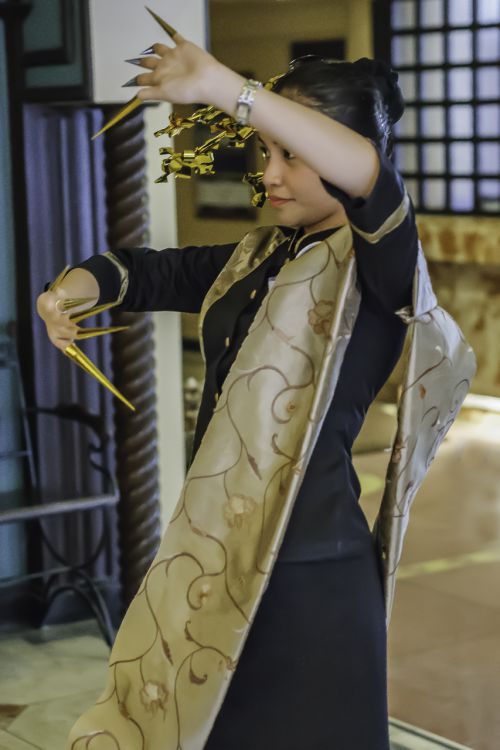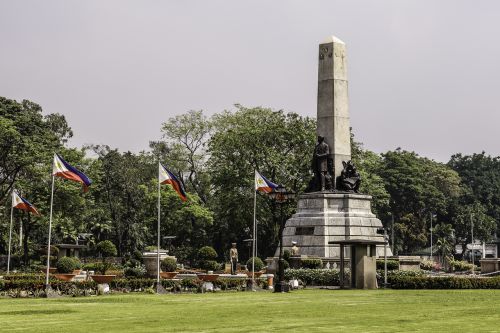March 2013: Back in the Philippines and tourism with my friends in Manila, Negros Oriental and Bohol.
1 - Manila.
It is on March 9, in the afternoon that I met two couples of my friends at CDG airport before taking the 8 pm Cathay Pacific flight bound to Manila. A fifth person, another classmate's daughter who could not come at the last moment, Anne-Lise, was to join us a few days later in the Philippines.
Apart from Anne-Lise who had already traveled to India neither Mireille and Paul nor Marie Therese and Daniel had never set foot in Asia.
At the local time, we arrived in Manila the following evening. As requested the hotel van was waiting at the international airport NAIA. The Ninoy Aquino International Airport is named after the current president's father, who was assassinated by the henchmen of Ferdinand Marcos August 21, 1983 while disembarking the aircraft arriving from his political exile in the USA.
It was a Sunday evening and it took us only thirty minutes to reach our hotel, Best Western La Corona, where I had booked our rooms. This comfortable hotel offers an excellent price/quality ratio and a gargantuan buffet breakfast for about 55 € per night. It is located in the tourist district of Ermita, a short walk from Rizal Park.
http://www.bestwesternhotelmanila.com/
Just the time to drop off our luggage and to refresh and we took a walk toward the Mall Robinson Place where I knew to find a good Chinese restaurant, Mr. Choy Kitchen.
Since we arrived quite recently, my friends were already surprised not to find locally the usual stereotypes distilled by our media regarding Manila, but instead a mega-metropolis with an obvious booming economy in which, alas, France does not participate or not much, except for luxury goods.
The next day we met at 8am at the restaurant for breakfast and then we went to a travel agency to arrange a half-day Manila tour with a guide.
(The staff of the hotel entertaining the guests during breakfast)
The city of Manila is one of 17 municipalities that make up the metropolis of Metro-Manila. The Megacity has a population of about 15 million inhabitants representing 17% of the population of the Philippines in 2012.
Our driver and guide took us first to Rizal Park, the Manila lung,
On this site, December 30, 1896 was executed the national hero Jose Rizal by the Spanish colonial army. Jose Rizal lived for some time in Paris and there, is a public garden named after him.
Then we visited of what remains of the old Spanish city of Intramuros destroyed by the crossfire between the Japanese and American armies during the liberation of Manila where 100,000 Filipinos civilians lost their lives. Then it was Fort Santiago at the mouth of the Pasig River and we ended not far from there by the San Augustine Church first built in 1599 and rebuilt twice more by the Spaniards after fires. The present church has since suffered seven major earthquakes and damages during the Second World War.
It is amazing to see on the doors 'church some bas relief representing Saints with an Asian face. The explanation is that the sculptor carved the Asian faces to thanks the Chinese Christians who sponsored some of the repairs.
Our guide then took us to the American cemetery at Fort Bonifacio in Taguig City, where lie 17,000 American corpsmen, victims of Japan but also of the tactical errors committed by General Douglas MacArthur who fled the Philippines abandoning his troops he had brought into the traps of Corregidor and Bataan.
Nevertheless, the American people who in these times of defeat badly needed one made Dear Old Douglas a national hero.
The death march that led the Americans and Filipino prisoners who survived Corregidor and Bataan to the Japanese concentration camp of Tarlac, is now officially recognized as a war crime.
Fortunately, for the war in the Pacific, a certain Admiral Nimitz overthrew the situation in favor of the USA first at the battle of the Coral sea in stopping the Japanese from invading Australia and then with the victory at the battle of Midway.
It was not until his new errors in the conduct of the Korean War that his government finally dismissed Mac Arthur.
To get to Fort Bonifacio, we passed first through the business district of Makati and we returned by Pasay with its many hectares of land reclaimed on the sea. Its Mall of Asia or MOA, is the third largest in the world with an ice skating rink inside.
Obviously, our guide avoided to show us the most squalid neighborhoods such as near the Protestant church UCCP of Parañaque where my sister-law is a Pastor. The other side of the river is crowded with slums. People call this bank derisively Riverside while on the opposite bank a high fence protects us from these paupers. On the bridge overlooking the river, high metal plates hide this poverty from the view of motorists and passengers who take this route to reach or return to the airport.
Although this aspect of Manila has not disappeared especially with the rural exodus and the victims driven from their homes by natural disasters, our TV channels always take pleasure in rebroadcasting the footage of the people living on the dunghill of Smoky Mountain in Tondo. Manila today it is a lot more than that. If someone had told me in 1980 that the city would become what it is today with its economic miracle and its skyscrapers springing up like mushrooms, I would have never wanted to believe it.
On 12 March afternoon we took a Cebu Pacific flight from Manila to the island of Negros and Dumaguete City where the Thalatta Resort van was waiting for us thanks to my friend Patrick, the owner. It finally drove us to our destination, the house of Mag-abo.
According to Dodong and Nora, our house keepers couple, Zarak and Gordon, my two guard dogs were constantly watching the gate because according to them they knew I was arriving. Curious is not it? I think the reason is that most dogs observe our actions. The preparation of the bedrooms, long chairs, hammock, and the large table on the terrace had not escaped to the dogs. No more than the aromas of good Filipino dishes cooked for us by Nora.
A découvrir aussi
- November 2009: from 2 to 5, San Carlos and the Pinta Flores festival. On 7, lunch at Sam’s place. On 13, the Dumaguete’s students demonstrating for the preservation of mother Earth.
- March 2011, from 11 to 23: Mag-abo house and Dumaguete
- October 2012: My research of garment manufacturers
Inscrivez-vous au blog
Soyez prévenu par email des prochaines mises à jour
Rejoignez les 21 autres membres


